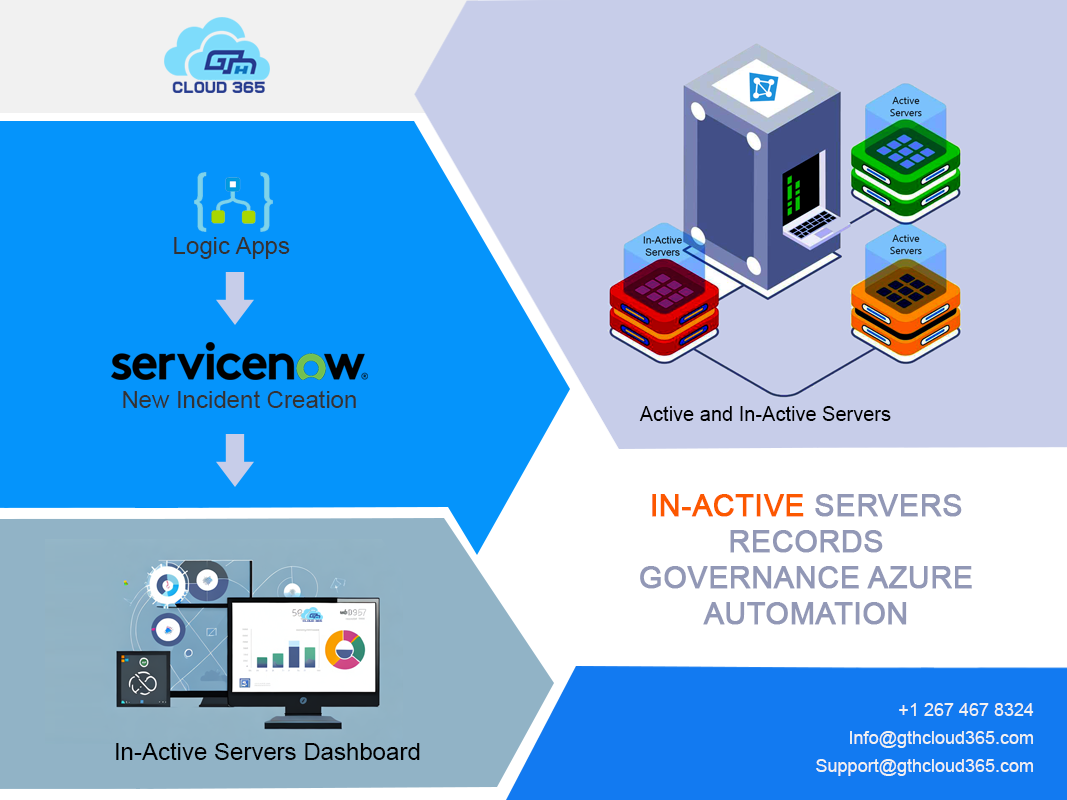In a sprawling enterprise environment, where clients rely on various IT systems and services managed through ServiceNow for IT service management and incident tracking, a significant challenge has emerged. There’s a lack of a solution to proactively identify and address inactive systems, which can lead to unnecessary costs. GTH Cloud 365 recognizes this issue and has developed a solution.
In this blog our approach involves deploying an Azure Automation Workflow that systematically identifies servers that have been inactive for the past six months. When such inactivity is detected, our solution triggers an incident in ServiceNow. Additionally, we’ve created a Power BI Dashboard that visually represents the server statuses, distinguishing between active and inactive systems.
Preparing for Integration :
- Getting the data from Azure Servers : Azure Runbook and Azure PowerShell access. Required permission on Azure Servers.
- Prerequisites for integration: Azure Logic Apps and ServiceNow API access, required permissions
- Setting up ServiceNow: Creating a ServiceNow developer instance and obtaining API credentials with key
- Connecting Logic Apps with ServiceNow: Create new incident with attachment using ServiceNow REST API
- Create a Power BI dashboard to view server details and their status.
- Power BI connected with Server CSV/Excel Sheet Files
Automation Process :
- Run the Azure PowerShell using Azure Runbook to get inactive servers which are not using from last 6 months.
- Create a CSV and Excel in SharePoint list.
- Trigger an Azure Logic App when a new file is created in SharePoint list and create new incident with attached CSV in ServiceNow.
- Create a Power BI dashboard to view server reports.
Benefits :
Efficiency : Azure Automation reduces manual intervention, leading to faster incident resolution and less downtime.
Consistency : Azure Automated workflows ensure that incident resolution follows predefined, consistent processes.
Cost Savings : By reducing the mean time to resolution (MTTR), the organization saves money by minimizing the impact of incidents on productivity.
Compliance and Reporting : Automated logging of incident details and resolution steps enhances compliance and simplifies reporting.
Scalability : The solution can easily scale to handle a growing number of incidents without a proportional increase in resources.

